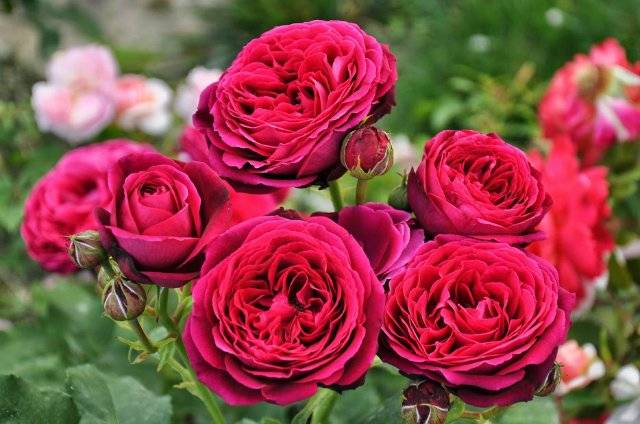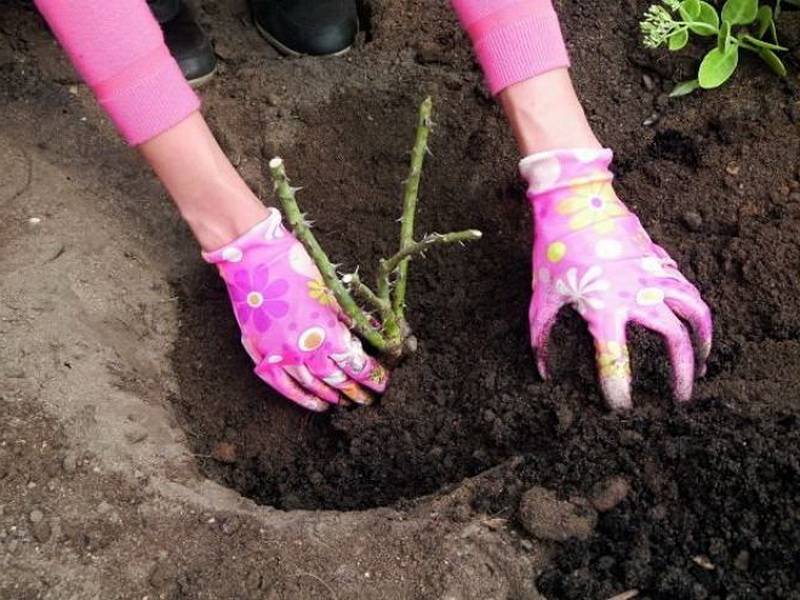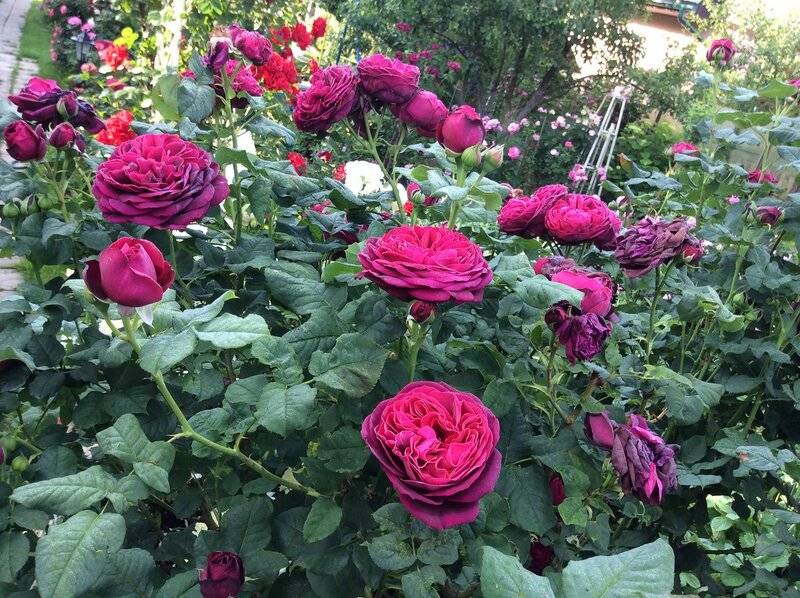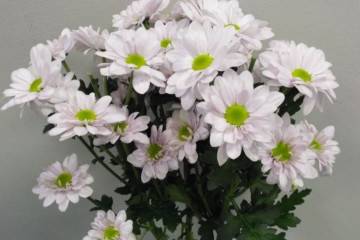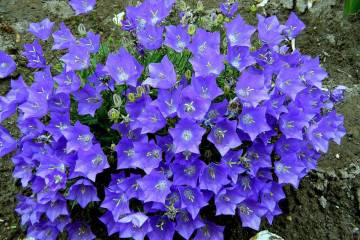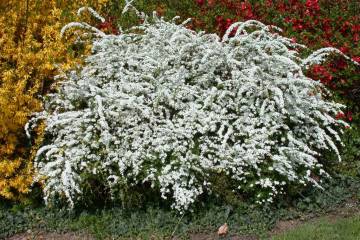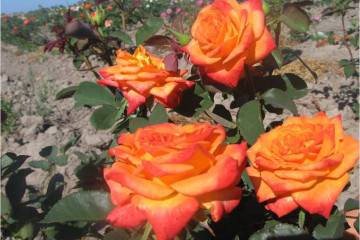Rose Astrid Decanter (Astrid Grafin von Hardenberg) - planting and care
Content:
The unusual color of the rose by Astrid Grafin von Hardenberg, combined with the wonderful flower shape and exquisite scent, will leave no one indifferent. At the beginning of the dissolution, the bud of the beautiful Countess has a maroon color, then the central velvety petals of a lighter color open: from dark scarlet to bright red. The plant develops rapidly, the shoots are powerful, there are few thorns.
Description of the variety
Rose Countess Astrid belongs to the group of scrubs. Translated from English "shrub" means "shrub". This group is one of the most popular in the Middle Lane.
The German company Rosen Tantau, engaged in the selection and cultivation of roses, was founded in 1906 by M. Tantau. At the moment Rosen Tantau is a global player in the rose market and the originator of many famous varieties. In 1985, H. Yu. Evers took over the management of the company, and in 1997 he created the Astrid Grafin von Hardenberg rose with flowers of deep, juicy and persistent purple hues. The impressive variety has won worldwide recognition and numerous awards in rose contests.
The height of the plant is up to 150 cm, and the width of the bush is about 120 cm. The foliage is dark green glossy. The stems are tall, the variety is perfect for cutting.
It blooms profusely and for a long time. Starting in May, the waves of flowering replace one another until the very frost. The enchanting aroma combines citrus and vanilla notes.
How to plant correctly
To grow a continuously and luxuriantly blooming rose bush, you need to find a suitable place for a seedling, feed the plant in time, properly cut and treat pests.
Seat selection
Rose Astrid Decanter loves light and warmth. The area where this variety will be located should be well lit, then the plant will form quickly and bloom often.
Avoid placing the rose bush in a low area where there is no air circulation. With this arrangement, the plant is susceptible to fungal diseases, and in winter the soil freezes there more. So that the area where the Countess von Hardenberg rose does not stagnate melt water, it must be higher than the rest of the territory. If, nevertheless, the bush needs to be placed in a lowland, the excess moisture is eliminated with the help of drainage.
The soil should be nutritious and loose. With a lack of oxygen, root growth worsens and the maturation of shoots is delayed.
Landing features
Planting dates depend on climatic conditions. In the Middle Lane, you can plant roses in spring and autumn.
Plants planted in spring start growing quickly and give many shoots to the detriment of the root system. As a result, over time, they begin to lag behind in development.
The most optimal time for planting seedlings with an open root is autumn. The bushes are planted before the onset of frost.
Preparing seedlings for planting:
- it is better to plant roses on cloudy days or in the evening, so that the seedlings do not suffer from the bright sun and calmly adapt;
- before planting, the seedlings are pruned, removing weak, dried shoots and buds;
- examine the root system and remove damaged areas.
A pit is prepared for the rose, a soil mixture is poured into it with a tubercle. A seedling is placed on the top of the tubercle, and the roots are straightened along the edges. Then they carefully cover the hole with shallow earth, trying not to damage the plant. The soil is carefully compacted, the plant is watered.
Further care
Newly planted plants are watered after 2 days, and the rest are watered as the soil dries. Park roses especially need timely watering during the period of growth, budding and flowering.
Watering and feeding
It is better to water the rose bushes rarely but abundantly. With frequent watering, surface roots are formed, which are damaged when loosening and can freeze under sudden frosts.
In the spring Countess Astrid needs nitrogen fertilizers, thanks to which the green mass of the plant increases. Then add phosphorus fertilizers necessary for the growth of roots and shoots. Potash fertilizers are applied to form high quality flowers.
Pruning
Annual pruning is essential for vigorous growth and abundant flowering. According to the time, the following stages are distinguished:
- spring pruning is essential for proper bush formation. It is carried out in early spring, when the buds begin to swell;
- summer pruning helps regulate flowering. Since Astrid Grafin is a re-flowering rose, after the first flowering, the faded flowers are cut from the upper part of the stem. This stimulates the emergence of new flowering shoots. Also, fattening branches that do not bear flowers are removed, and shoots that thicken the center of the bush;
- autumn pruning is carried out before the roses are sheltered for the winter. Weak and diseased shoots, flowers, and foliage are removed.
Wintering
In cold regions, roses are sheltered for the winter. To protect it from frost, the plant is huddled, then the branches are bent to the ground and fixed with staples. A frame is installed around the bush and filled with insulation. Then cover with a covering material.
Reproduction
Roses propagate by seeds and vegetatively.
The main ways of breeding varietal roses:
- grafting with a graft on a stock;
- budding - inoculation with a single kidney;
- cuttings;
- dividing the bush;
- layering.
The simplest and most affordable method is grafting. For reproduction by lignified cuttings, they are cut in the fall, in the spring, green cuttings are carried out. Cuttings 10-20 cm long are treated with a rooting stimulator and planted so that the tops with the upper bud protrude above the surface. Cover with foil. Over time, rooted cuttings are planted in separate containers.
Astrid Decanter in landscape design
Shrubs are a great alternative to other shrubs in landscaping. The decorativeness of roses of this group is high and constant, and the range of possibilities in the design of the territory is huge. They are suitable for decorating walls and creating dense colorful hedges, they are planted in mixed borders, groups and on solid woods. Self-sufficient, showy roses Astrid Grafin von Hardenberg can also be excellent specimen plants.
The variety is versatile, it can be used to decorate parks, garden plots and used for cutting.Cut roses are indispensable in bouquets, because their aroma is not inferior to the perfection of dense double flowers of intense burgundy-purple color. At the same time, the flowers retain their freshness for a long time. The main thing is to plant the seedlings correctly and provide them with the required care.
